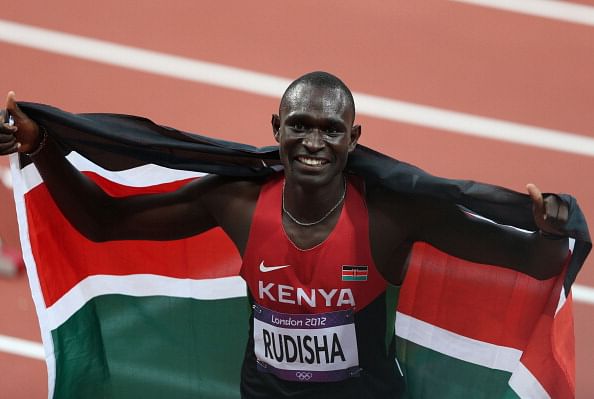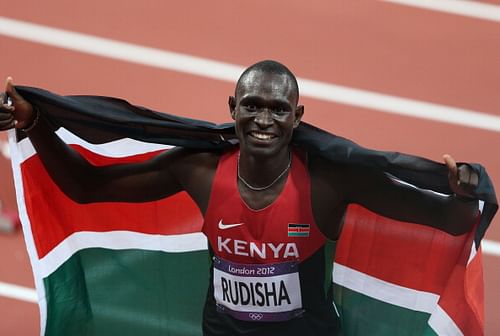
How much does it cost to train Kenyan Olympians?

Nairobi, Feb 19 (IANS) Athletics Kenya (AK) president Isaiah Kiplagat posed a pertinent question at the recently concluded International Association of Athletics Federations (IAAF) Permit Meeting here. “How did people expect Kenya to post good results at the 2012 Olympics when we trained the entire team consisting of 47 athletes on a total budget of $470,000 while Jamaica invested $1.2 million on Usain Bolt only,” he asked.
Bolt’s three gold medals alone superseded Kenya’s two golds, which they won in 3,000m steeplechase and 800m, alongside four silver and five bronze medals. This implies that Jamaica invested on Bolt three times the amount that Kenya spent on the entire team, bringing to light the question: how much does it cost to train an Olympic champion?
Being an Olympic athlete is a physical and financial struggle. Olympians train for years before they even compete at an Olympic level. Many athletes easily spend several hundred thousands of dollars before they even get to compete in the Olympics, reports Xinhua.
On an average, raising an Olympian costs between $50,000-$400,000 over a lifetime. That’s why sponsorship is the difference between living the dream and just dreaming. In Bolt’s case, Puma sponsored him from the age of 16 to take the enormous pressure off his family.
“In Kenya, we train on our own and shoulder all expenses by ourselves. The authorities only come in about three weeks to the Games,” a leading athlete said on condition of anonymity.
The athlete spelt out that expenses include apartment rent, food and electricity bills, family responsibilities. Air travel and hotel accommodation are expensive parts of the costs to be an Olympic athlete while attending international events on their road to attaining Olympian stature.
For 30 years, Kenyan runners have dominated distance running, where they have won more Olympic medals in middle and long distance running than any other country. So how do they do it?
“Most athletes are self-made and only attract attention when they start excelling. Prior to that, nobody is willing to engage them,” said renowned athletics coach Colm O’ Cornell, who also trains 800m Olympic champion David Rudisha.
He said there are a lot of theories why Kenyan athletes succeed, ranging from genetic advantages, to altitude training, socio-economic factors and so on — but hard work has always been their cornerstone.
“A glance at their training schedule shows there is still a lot of hard work. Most believe that the winner of any race is the one who has trained hardest, thus the key to being a champion is simply to work harder than anyone else.”
Bolt’s recipe for lightning speed is fuelled by a healthy gastronomic mix of six meals a day, consisting of 60 percent protein, 30 percent carbohydrates and 10 percent fat. This is not a practical schedule for the average Kenyan runner. If the Jamaican followed this meal plan four days a week, it would cost $12,000 a year.
For four days prior to the London Olympics, the Kenyan athletes’ food was extremely plain. They were eating for fuel – plates piled high with carbohydrates.
“It’s just normal Kenyan food – vegetables, spaghetti, ugali. A competitive runner should rarely eat meat,” Kiplagat said. No vitamins or mineral supplements, no protein or sports drinks containing electrolytes that one might find with Olympians in other countries. Just plain water.
A senior lecturer at Kenyatta University’s Department of Exercise Science Vincent Onywera said the food borrows heavily from the forefathers who lived on fruits, vegetables, roots and lean meat.
They place a lot of faith in hill running that includes at least one workout of uphill repetitions every week, building a great deal of strength and stamina in running muscles.
Their coaches warn against the dangers of running on tarmac, especially for young runners and prefer the dirt roads that help to prevent injuries and builds strength in feet, ankles and calf muscles that are forced to compensate for the uneven surface.
“Their training is basically rudimentary in nature and devoid of modern day techniques,” said John Kattam, one of the country’s national coaches.
“Where do you think they would be if they were exposed to the contemporary systems like weight training?”